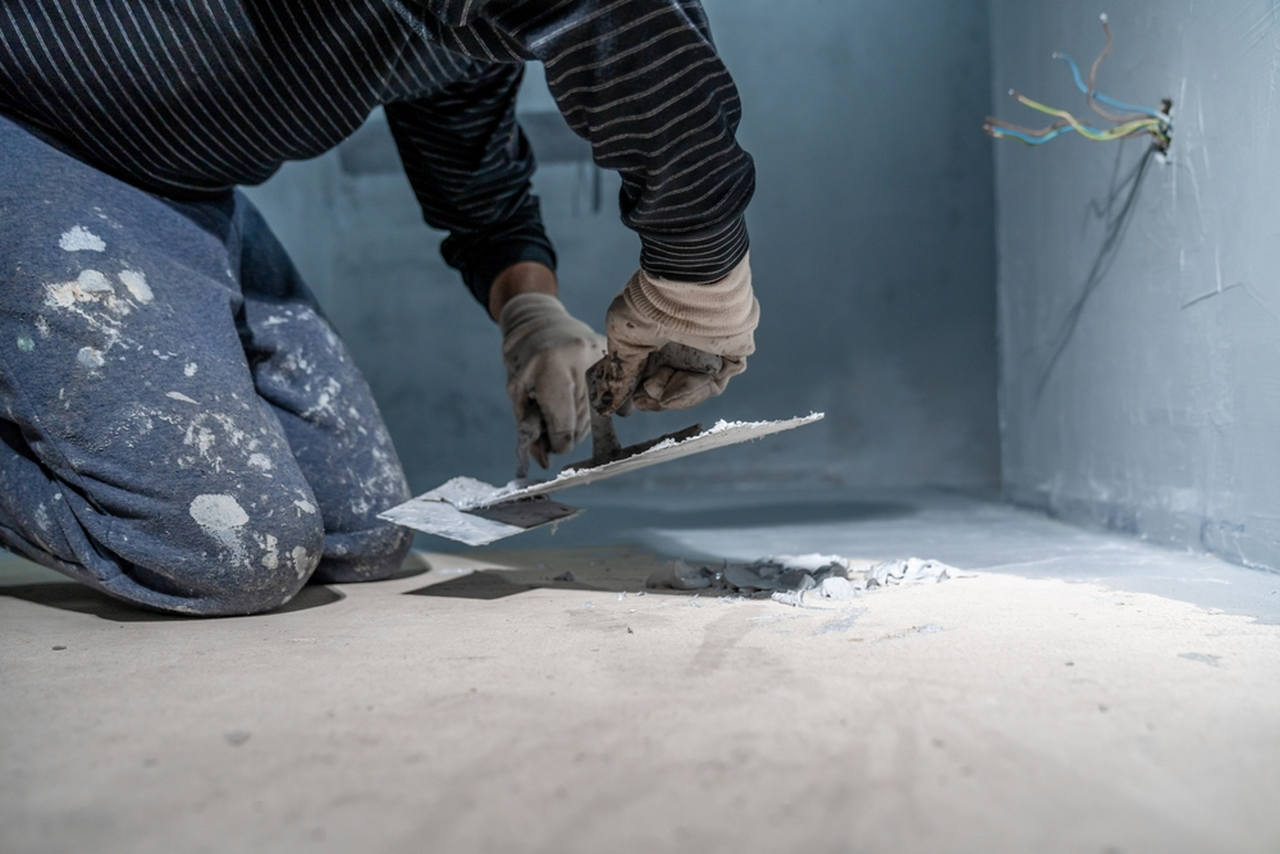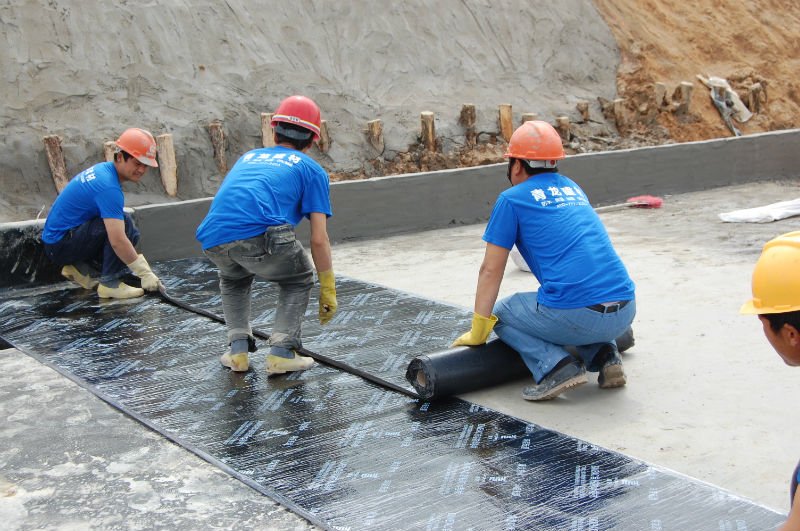The Hidden Costs of Ignoring Water Solutions in Your Home
Wiki Article
Just How Waterproofing Works: A Thorough Take A Look At Techniques and Technologies
Waterproofing is crucial for shielding frameworks from moisture-related damage. It involves numerous techniques and technologies that develop barriers against water intrusion. Conventional methods, such as compacted clay, exist side-by-side with modern-day advancements like liquid-applied membrane layers. Understanding the nuances of these strategies is essential for efficient application. The performance of any type of waterproofing remedy pivots not only on the strategies utilized however also on recurring upkeep and examination. What are the key factors that affect lasting efficiency?Recognizing the Essentials of Waterproofing
Waterproofing is an important procedure that protects frameworks from water intrusion, which can result in considerable damages with time. This approach involves the application of various products and techniques developed to create an obstacle versus moisture. The key goal is to protect against water from passing through surfaces, which can trigger damage, mold growth, and architectural instability.Various elements affect the choice of waterproofing technique, including the sort of structure, its location, and ecological problems. Comprehending the physics of water activity and the buildings of various products is important in picking an efficient waterproofing solution.Effective waterproofing not only safeguards buildings yet also improves their longevity and stability. Typically, it is integrated into the style phase of building to guarantee comprehensive defense. As understanding of water-related issues grows, the relevance of recognizing waterproofing fundamentals becomes significantly clear to engineers, building contractors, and homeowner alike.Typical Waterproofing Approaches
Standard waterproofing techniques have actually been used for centuries, depending on tried and true strategies and products to secure structures from water damage. One of the earliest techniques includes the usage of clay, which, when compressed, produces a natural barrier versus dampness. In addition, bitumen, a sticky, black product originated from petroleum, has been employed for its waterproof buildings, frequently related to roofs and foundations.Another method entails the application of lime-based plasters, which supply a breathable layer that enables moisture to get away while stopping water access. Thatch roofing, a standard approach still seen in some societies, offers superb waterproofing as a result of its tightly loaded straw layers.Moreover, using stone and brick has actually been popular, as these materials are inherently immune to water when effectively set up. Generally, typical waterproofing techniques highlight the relevance of selecting proper materials and building and construction practices to improve resilience against water breach.Modern Waterproofing Technologies
Advancements in modern-day waterproofing innovations have actually transformed the way structures are shielded from water damages. Innovative methods such as liquid-applied membranes and innovative sealers have actually improved the effectiveness and flexibility of waterproofing options. These technologies enable for smooth application, lowering the danger of leakages and making sure extensive insurance coverage over complicated surfaces.Moreover, the combination of smart modern technologies, such as dampness sensing units and automated monitoring systems, allows real-time analysis of waterproofing performance. This proactive strategy facilitates timely maintenance and reduces long-lasting repair service costs.Additionally, advancements in spray-applied finishings offer quick application and outstanding attachment, adapting to different substratums while giving durable defense. Methods like polymer-modified systems even more boost versatility and resilience, making them ideal for varied atmospheres. Overall, contemporary waterproofing technologies not just mitigate water intrusion yet additionally add to the longevity and sustainability of frameworks, noting a substantial shift in the sector.Products Used in Waterproofing
The effectiveness of waterproofing solutions greatly counts on the materials utilized in their application. Numerous products are used to develop barriers versus water ingress, each with unique properties matched for various atmospheres. Frequently used products consist of membrane layers, finishings, and sealants.Liquid-applied membrane layers, frequently made from polyurethane or acrylic, develop a seamless obstacle that adapts to complex surfaces. Sheet membrane layers, commonly constructed from rubber or polycarbonate, offer toughness and are perfect for bigger areas. Furthermore, cementitious waterproofing materials, composed of cementitious substances, supply outstanding adhesion and flexibility.Sealants made from silicone or polyurethane are necessary for joints and joints, guaranteeing comprehensive protection. Advanced products, such as geo-composite membrane layers, combine multiple features, enhancing efficiency. Generally, the option of waterproofing materials is crucial in accomplishing long-lasting and efficient water resistance, customized to specific task requirements and environmental problems.
Usual Applications of Waterproofing
Waterproofing plays an essential function in different sectors, guaranteeing the long life and integrity of structures. Common applications include property options that safeguard homes, commercial framework that safeguards services, and industrial setups that call for durable protection versus dampness. Comprehending these applications highlights the importance of waterproofing in preserving both security and performance throughout various settings.Residential Waterproofing Solutions
Numerous home owners deal with challenges with wetness breach, making effective domestic waterproofing services essential. Different methods exist to address this problem, consisting of exterior and interior waterproofing systems. Interior remedies usually include the application of sealers and finishings to cellar wall surfaces, which aid stop water infiltration. Exterior techniques normally include the installment of drainage systems and water-proof membrane layers that draw away water away from the foundation.Additionally, home owners may take into consideration sump pumps to eliminate water accumulation and dehumidifiers to regulate moisture degrees. Appropriate grading and the usage of rain gutters additionally play a vital function in managing water flow around the home. By executing these strategies, house owners can significantly minimize the danger of water damages and mold development, ensuring a dry and risk-free living environment.
Business Framework Defense
Efficient waterproofing solutions play a crucial role in the defense of industrial infrastructure. Drainage & waterproofing company Omaha. These methods are necessary for safeguarding buildings, car park structures, and bridges from water damage, which can compromise architectural integrity and result in costly fixings. Usual applications include the installment of membranes, finishes, and sealers that produce obstacles versus wetness seepage. Areas such as basements, roofings, and exterior wall surfaces are often prioritized to guarantee longevity and sturdiness. Furthermore, waterproofing systems can enhance energy effectiveness by avoiding water-related concerns that may result in mold and mildew growth and damage. By applying durable waterproofing measures, homeowner can shield their investments and keep functional effectiveness, inevitably adding to the overall sustainability of industrial centersIndustrial Applications Introduction
While numerous industries deal with distinct obstacles, the requirement for trustworthy waterproofing services continues to be a consistent in commercial applications. Industries such as manufacturing, building, and power often come across settings where moisture exposure can threaten architectural stability and functional performance. In making facilities, waterproofing is critical for shielding machinery and products from water damage. In construction, it safeguards foundations and basements versus groundwater seepage. The energy sector relies upon waterproofing for the defense of devices in hydroelectric plants thompson's waterseal waterproofer plus and overseas frameworks. In addition, food processing sectors use waterproofing to guarantee health and compliance with safety and security requirements. Overall, reliable waterproofing remedies are crucial for enhancing durability, safety and security, and productivity throughout numerous commercial setups.
Upkeep and Durability of Waterproofing Solutions
Waterproofing services are created to use long-term defense versus dampness intrusion, normal upkeep is crucial to ensure their effectiveness and durability. Routine evaluations play a substantial function in identifying possible problems such as splits, peeling, or signs of water damage. Attending to these issues promptly can protect against waterproof garage walls additional degeneration and pricey repairs.Additionally, cleaning up the surface of waterproofed locations assists get rid of dust and particles that can endanger the integrity of the waterproofing obstacle. It's likewise a good idea to reapply safety coatings or sealers as recommended by manufacturers to maintain perfect efficiency. Environmental elements, such as UV exposure and severe weather, can influence the life-span of waterproofing products, making routine analysis essentialRegularly Asked Concerns
Can Waterproofing Be Applied in Winter?
The concern of using waterproofing in winter increases issues concerning attachment and curing. Several products may not perform at their ideal in low temperature levels, necessitating mindful choice and consideration of certain guidelines for reliable application.For How Long Does Waterproofing Commonly Last?
The duration of waterproofing performance varies based on materials and environmental aspects. Normally, it can last from 5 to 10 years, however routine upkeep and evaluations are vital to guarantee peak performance and long life.Is DIY Waterproofing Effective and Safe?
The performance and safety and security of DIY waterproofing depend on numerous factors, consisting of material quality and application strategy. While some individuals attain sufficient results, others may come across problems that jeopardize lasting security and structural honesty.What Are the Indications of Failing Waterproofing?
Signs of stopping working waterproofing consist of noticeable water stains, peeling paint, mold development, musty odors, and moisture in walls or ceilings - Water Solutions. These helpful site signs suggest endangered barriers, necessitating timely inspection and potential removal to avoid further damageJust how Do I Pick the Right Waterproofing Professional?

Report this wiki page